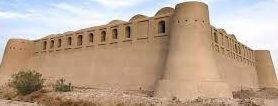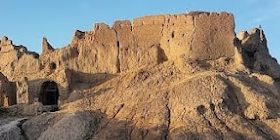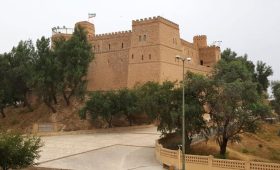The southeast of the country contains many valuable historical works; From the burnt city to the crater of Gholaman. Jalal Abad Citadel is one of the most remarkable sights of Sistan and Baluchistan province. This building was left from the Qajar period and there are many stories about it in the minds of the people of Hirmand. This work is also registered in the list of national works of Iran.
Sistan and Baluchistan is the birthplace of the oldest civilizations and cities. Burnt City is considered one of these examples, which is located in this region with a civilization equal to five thousand years. In the corners of Sistan, you can see traces of many cultural and historical works. Before the drought in this area, Sistan had a green nature and many tourists came to this area to spend time in nature. One of the most important cities of Sistan in the field of culture is Hirmand, centered in Dost Mohammad, which leads from the west to Zabul and from the east to Afghanistan, from the north to Lake Hamon and Afghanistan, and from the south to Zahak.
In Hirmand, there are 45 ancient works and historical and pristine attractions, among them Jalal Abad Citadel, Kirkoyeh Fire Temple, Niatek Forest and ancient wells. Jalalabad Citadel is one of the sights of Zabul and is of special importance due to the geographical and strategic location of this city and its proximity to Afghanistan. This valuable work dates back to the Qajar period and has been registered in the list of national works of Iran.
According to the head of Hirmand Cultural Heritage, Handicrafts and Tourism Department, Jalalabad Citadel had a military residential use and was used by Muhammad Ali Khan Kiani in the late Qajar period and early Pahlavi period.
Jalal Abad Citadel was built by Mohammad Ali Khan Kiyani, nicknamed Khan Malek, from the end of Naseruddin Shah’s reign; Someone who spent several years of his youth among the British salary earners in Sistan. Khan Malik used to travel to Afghanistan to carry out specific missions from England. But when the officers of the Border Dispute Resolution Commission were treated violently in Jalalabad, he was angered and his rights were cut off on the charge of inciting the people against British interests. Khan Malek died in 1332 and this building is also a relic of his time.
There were many gardens in this citadel that were built by Indians. Residents of Hirmand region tell many stories about this citadel.
In the past and before the drought in this region, people’s livelihood was good and in a period of time, due to the abundance of grains in Sistan, this province had become the country’s warehouse. However, although there is no water; there are still many treasures hidden in this city, the optimal use of which is important for the life of the people of Sistan.
Jalal Abad Citadel has a square plan and has a central courtyard with four observation towers in the corners of the building. The materials used in the construction of the citadel mainly include raw clay and bricks. Almost traditional elements of Iranian architecture have been used in this building in terms of coverings, such as Taq Anga, Chahar Garde Posh and Chinese sweat. Jalalabad Citadel, like other important buildings of Sistan and Baluchistan, was built on a natural hill to protect against moisture and soil erosion.




